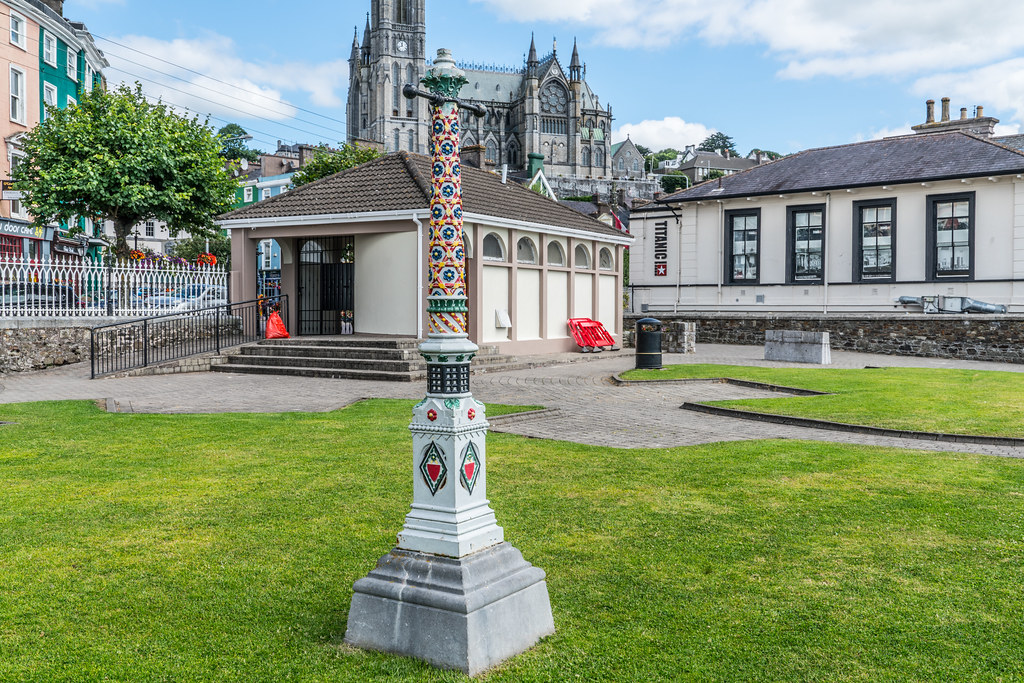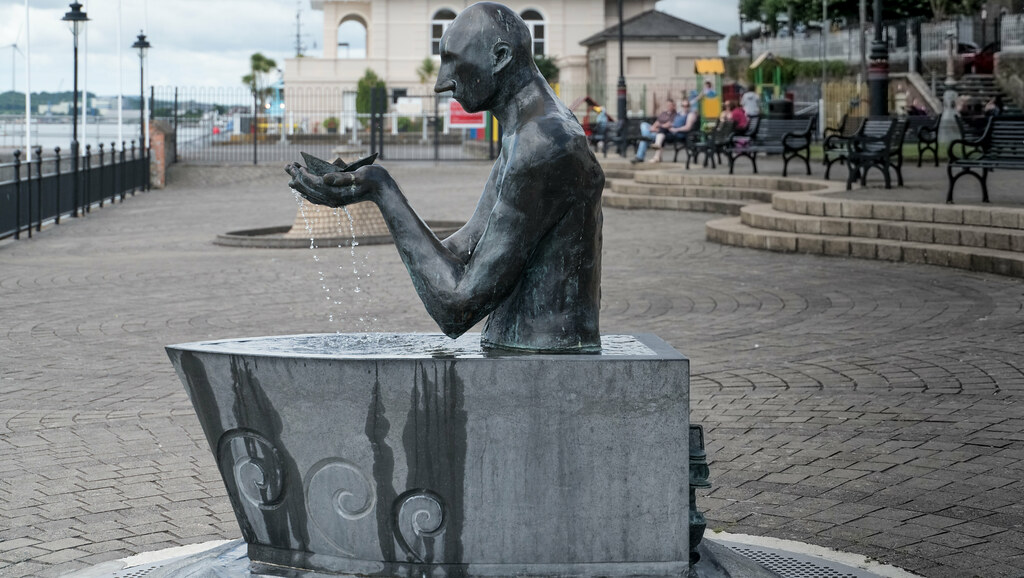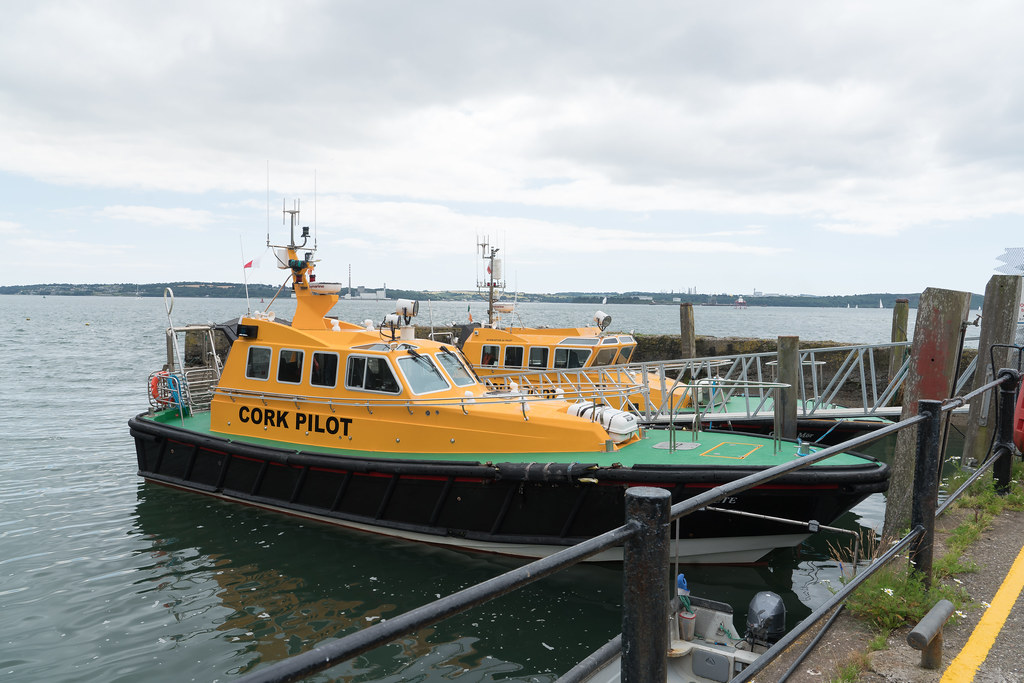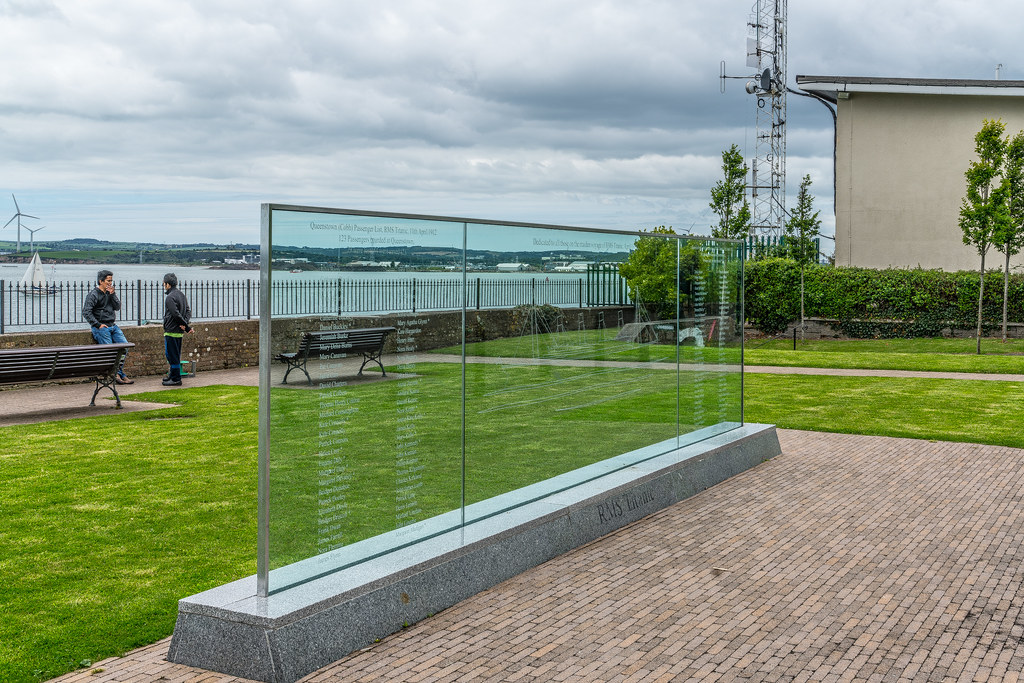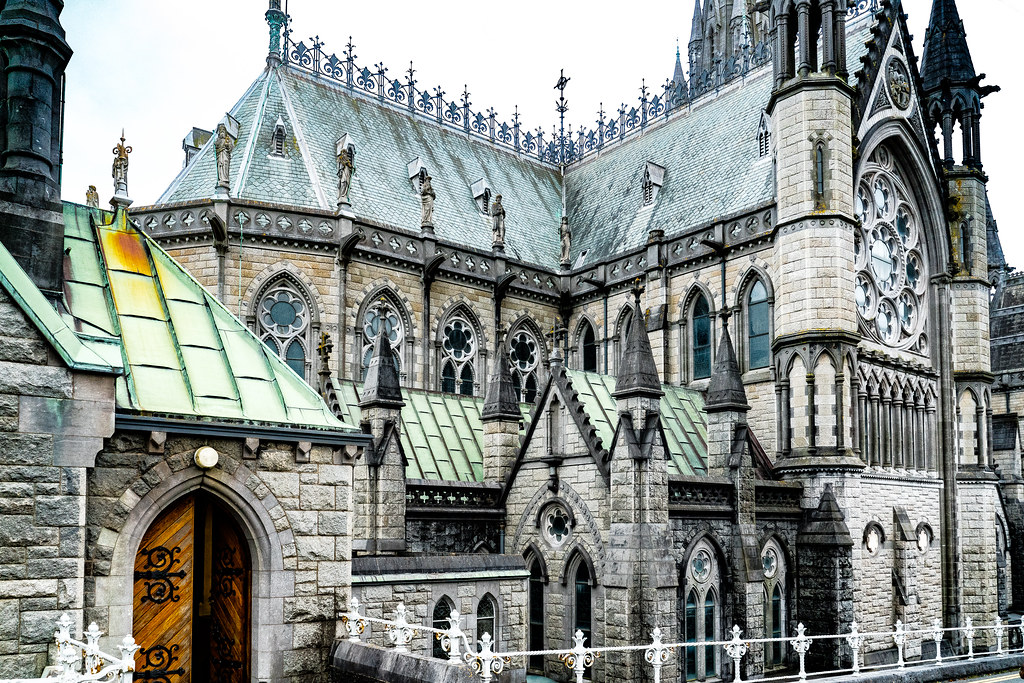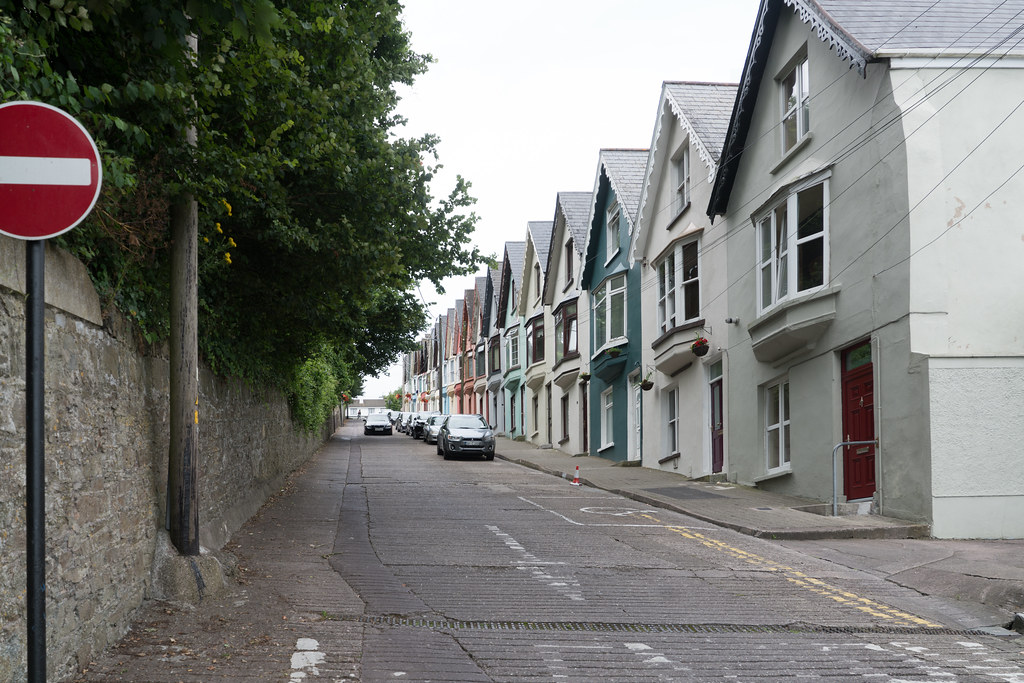COBH - 2016 VISIT
SORRY FOR THE DELAY
Cobh , known from 1849 until 1920 as Queenstown, is a tourist seaport town on the south coast of County Cork, Ireland. Cobh is on the south side of Great Island in Cork Harbour and is home to Ireland's only dedicated cruise terminal. Tourism in the area draws on the maritime and emigration legacy of the town - including its association with the RMS Titanic.
Facing the town are Spike Island and Haulbowline Island, and on a high point in the town stands St Colman's Cathedral, one of the tallest buildings in Ireland and seat of the diocese of Cloyne.
The port, which has had several Irish-language names, was first called "Cove" ("The Cove of Cork") in 1750. It was renamed "Queenstown" in 1849 to commemorate a visit by Queen Victoria. This remained the town's name until 1920, when it was renamed Cobh by the new authorities of the Irish Free State. Cobh is a Gaelicisation of the English name Cove and it shares the same pronunciation but has no meaning in the Irish language.
One of the major transatlantic Irish ports, the former Queenstown was the departure point for 2.5 million of the six million Irish people who emigrated to North America between 1848 and 1950. On 11 April 1912, Queenstown was famously the final port of call for the RMS Titanic when she set out across the Atlantic on her ill-fated maiden voyage. She was assisted by the PS America and the PS Ireland, two aging White Star Line tenders, along with several other smaller boats delivering first-class luggage. Some sources and local lore suggest that a Titanic crew member, John Coffey, a native of Queenstown, left the ship at this time, and thereby escaped the sinking.At Queenstown 123 passengers boarded in all; only 44 survived the sinking.
A tragically notable ship to be associated with the town, the Cunard passenger liner RMS Lusitania, was sunk by a German U-boat off the Old Head of Kinsale while en route from the US to Liverpool on 7 May 1915. 1,198 passengers died, while 700 were rescued. The survivors and the dead alike were brought to Cobh, and the bodies of over 100 who perished in the disaster lie buried in the Old Church Cemetery just north of the town. The Lusitania Peace Memorial is located in Casement Square, opposite the arched building housing the Cobh Library and Courthouse.
During First World War, Queenstown was a naval base for British and American destroyers operating against the U-boats that preyed upon Allied merchant shipping. Q-ships (heavily armed merchant ships with concealed weaponry, designed to lure submarines into making surface attacks) were called Q-ships precisely because many were, in fact, fitted-out in Queenstown. The first division of American destroyers arrived in May 1917, and the sailors who served on those vessels were the first American servicemen to see combat duty in the war. When that first convoy arrived in port after enduring a rough passage in what were little more than open boats, its members were met by a crowd of sailors and townspeople, thankful for their anticipated help towards stopping the U-boats that were blockading western Europe. Admiral Sir Lewis Bayly, commander of the Coast of Ireland station, met the senior American officer, Commander Joseph Taussig, at the dock and inquired as to how soon the weather-beaten American ships could be put to use. "We're ready now, sir!" was the widely quoted answer from the American.
The United States Navy established the Queenstown Naval Air Station on 22 February 1918 to operate flying boats. This naval air station closed shortly after the Armistice of 11 November 1918.
Due to its tactical military importance, under the terms of the 1921 Anglo-Irish Treaty the port remained a UK sovereign base. Along with the other Treaty Ports it was handed over to the government of the Irish Free State in 1938.
Facing the town are Spike Island and Haulbowline Island, and on a high point in the town stands St Colman's Cathedral, one of the tallest buildings in Ireland and seat of the diocese of Cloyne.
The port, which has had several Irish-language names, was first called "Cove" ("The Cove of Cork") in 1750. It was renamed "Queenstown" in 1849 to commemorate a visit by Queen Victoria. This remained the town's name until 1920, when it was renamed Cobh by the new authorities of the Irish Free State. Cobh is a Gaelicisation of the English name Cove and it shares the same pronunciation but has no meaning in the Irish language.
One of the major transatlantic Irish ports, the former Queenstown was the departure point for 2.5 million of the six million Irish people who emigrated to North America between 1848 and 1950. On 11 April 1912, Queenstown was famously the final port of call for the RMS Titanic when she set out across the Atlantic on her ill-fated maiden voyage. She was assisted by the PS America and the PS Ireland, two aging White Star Line tenders, along with several other smaller boats delivering first-class luggage. Some sources and local lore suggest that a Titanic crew member, John Coffey, a native of Queenstown, left the ship at this time, and thereby escaped the sinking.At Queenstown 123 passengers boarded in all; only 44 survived the sinking.
A tragically notable ship to be associated with the town, the Cunard passenger liner RMS Lusitania, was sunk by a German U-boat off the Old Head of Kinsale while en route from the US to Liverpool on 7 May 1915. 1,198 passengers died, while 700 were rescued. The survivors and the dead alike were brought to Cobh, and the bodies of over 100 who perished in the disaster lie buried in the Old Church Cemetery just north of the town. The Lusitania Peace Memorial is located in Casement Square, opposite the arched building housing the Cobh Library and Courthouse.
During First World War, Queenstown was a naval base for British and American destroyers operating against the U-boats that preyed upon Allied merchant shipping. Q-ships (heavily armed merchant ships with concealed weaponry, designed to lure submarines into making surface attacks) were called Q-ships precisely because many were, in fact, fitted-out in Queenstown. The first division of American destroyers arrived in May 1917, and the sailors who served on those vessels were the first American servicemen to see combat duty in the war. When that first convoy arrived in port after enduring a rough passage in what were little more than open boats, its members were met by a crowd of sailors and townspeople, thankful for their anticipated help towards stopping the U-boats that were blockading western Europe. Admiral Sir Lewis Bayly, commander of the Coast of Ireland station, met the senior American officer, Commander Joseph Taussig, at the dock and inquired as to how soon the weather-beaten American ships could be put to use. "We're ready now, sir!" was the widely quoted answer from the American.
The United States Navy established the Queenstown Naval Air Station on 22 February 1918 to operate flying boats. This naval air station closed shortly after the Armistice of 11 November 1918.
Due to its tactical military importance, under the terms of the 1921 Anglo-Irish Treaty the port remained a UK sovereign base. Along with the other Treaty Ports it was handed over to the government of the Irish Free State in 1938.
THE PHOTO DIARY IS NOT LIMITED TO CORK AS I ONLY VISIT THE CITY ONCE EVERY YEAR AND 2020 MAY BE AN EXCEPTION. I AM BASED IN DUBLIN BUT DURING THE SUMMER MONTHS I VISIT BELFAST, LIMERICK, GALWAY, KILKENNY AND WATERFORD AND USUALLY DEVOTE A WEEK TO PHOTOGRAPHING EACH OF THE CITIES IN QUESTION
You will find links to buy products from Amazon, Google and other partners. If you click on these links, you’ll find that the URL includes a small extra piece of text which identifies that the click came from my websites. This text is an affiliate code, and it means that I get a small percentage of the money you spend if you choose to buy that product, or, in some cases, other products from the site soon after. These affiliate links help pay the costs of producing my websites and ensure that the content is free to you.

